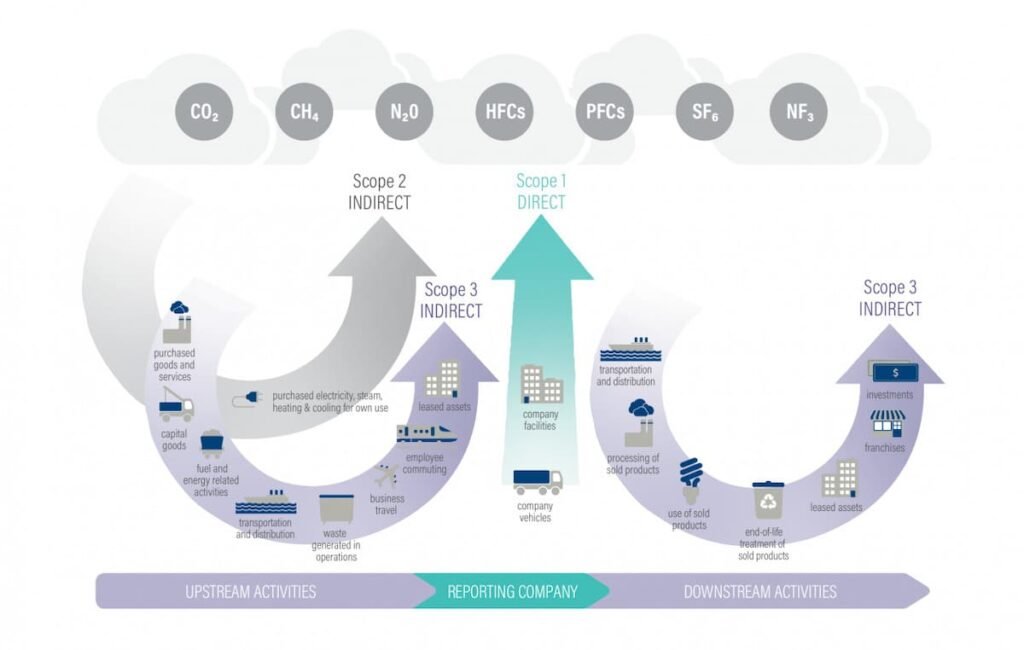
Greenhouse gas (GHG) emissions are a significant contributor to global warming and climate change. These gases, including carbon dioxide, methane, and nitrous oxide, trap heat in the atmosphere, leading to a rise in global temperatures. The primary sources of these emissions are human activities, particularly those related to industry, energy production, and transportation. This article provides a comprehensive overview of global greenhouse gas emissions, their sources, impacts, and potential solutions.
The Current State of Global Greenhouse Gas Emissions
As of 2023, global greenhouse gas emissions have reached an all-time high, threatening to push the world into unprecedented levels of global heating. The world is rapidly running out of its “carbon budget,” the amount of carbon dioxide that can be emitted while staying below the critical threshold of 1.5C above pre-industrial temperatures.
Despite a 4.6% drop in emissions in 2020 due to pandemic-related lockdowns, emissions rebounded by 6.4% in 2022, reaching a new record and surpassing pre-pandemic levels. This increase was primarily driven by the manufacturing and energy sectors.

Scope 1 2 3
Scope 1, 2, and 3 are categories of greenhouse gas emissions that are used to measure and assess a company’s environmental impact. These scopes were created by the Greenhouse Gas Protocol, the world’s most widely used greenhouse gas accounting standard.
- Scope 1 emissions are direct emissions from sources that an organization owns or controls directly. This includes emissions from burning fuel in company-owned vehicles or from industrial processes at company-owned facilities.
- Scope 2 emissions are indirect emissions that result from the generation of purchased energy. This includes emissions caused when generating the electricity that a company uses in its buildings or operations.
- Scope 3 emissions are indirect emissions that are not produced by the company itself and are not the result of activities from assets owned or controlled by the company. These emissions occur up and down the company’s value chain, including both upstream and downstream activities. Examples include emissions from the production of purchased goods and services, transportation and distribution, and waste generated in operations.
Globally, the key greenhouse gases emitted by human activities are carbon dioxide (CO2), methane (CH4), nitrous oxide (N2O), and fluorinated gases (F-gases). CO2 is the primary greenhouse gas emitted through human activities, accounting for 79% of all U.S. greenhouse gas emissions in 2021. The main sources of global greenhouse gas emissions can be broken down by economic activities such as electricity and heat production, industry, agriculture, forestry, and other land use, transportation, buildings, and other energy. It’s important to note that for many organizations, scope 3 emissions account for the highest proportion of total emissions and are usually the hardest to reduce. However, understanding and measuring these emissions is crucial for companies to identify the greatest opportunities for reduction and to make progress towards net-zero emissions.
Major Contributors to Greenhouse Gas Emissions
A significant portion of global emissions can be traced back to a relatively small number of companies. Just 100 companies have been the source of more than 70% of the world’s greenhouse gas emissions since 1988. These companies, primarily in the fossil fuel industry, include ExxonMobil, Shell, BP, and Chevron.
The construction industry also contributes significantly to global emissions, accounting for 33% of the greenhouse gas emissions and 40% of the global energy consumption. This includes emissions from the use of equipment, the manufacturing of building materials, and transportation.
The Impact of Greenhouse Gas Emissions
The consequences of unchecked greenhouse gas emissions are severe. If fossil fuels continue to be extracted at the same rate over the next 28 years as they were between 1988 and 2017, global average temperatures would be on course to rise by 4C by the end of the century. This could lead to catastrophic consequences, including substantial species extinction and global food scarcity risks.
Potential Solutions and Innovations
Addressing the issue of greenhouse gas emissions requires a multi-faceted approach, including policy changes, technological innovations, and shifts in societal behavior.
Policy Changes
Policies that focus on greenhouse gas emissions mitigation are crucial. These can include regulations such as building codes that ensure new buildings incorporate designs that are both cost and energy effective. Carbon taxes and emission trading schemes can also encourage industry and the general public to reduce GHG emissions by using energy efficiently and opting for cleaner, renewable sources of energy.
Technological Innovations
Technological innovations can also play a significant role in reducing greenhouse gas emissions. For example, a project at Harvard University is working on reinventing air conditioning systems to eliminate direct greenhouse gas emissions while making cooling systems smaller and vastly more efficient.
Shifts in Societal Behavior
Changes in societal behavior can also contribute to reducing greenhouse gas emissions. For instance, nearly 100 companies, including Apple, Facebook, Google, and Ikea, have committed to 100% renewable power under the RE100 initiative.
Conclusion
The issue of global greenhouse gas emissions is a complex and urgent one. It requires concerted efforts from all sectors of society, including governments, businesses, and individuals. While the challenge is significant, there are also opportunities for innovation and progress in the quest to reduce emissions and mitigate the impacts of climate change.
More Information: circulartree.com